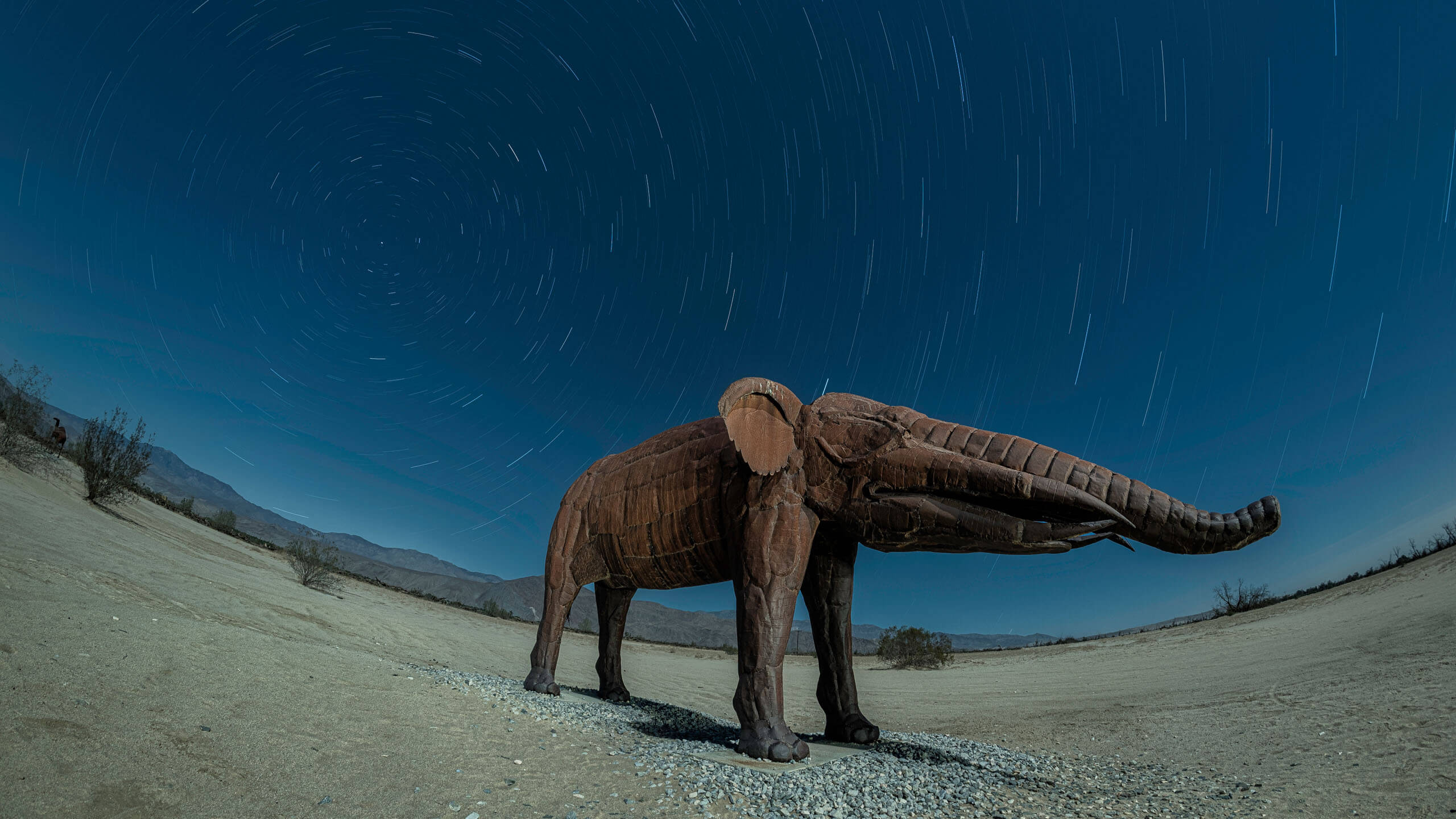“Why don’t you show up in your night photos?” The answer to this invisibility is fascinating. Best of all, it’s fun and easy to do.
Time is your friend
Light painting images, even during a full moon, often involve long exposures. Many of my photos with light painting have long exposures of two minutes or more.
A night photographer’s superpower is invisibility

Generally speaking, you need to stand still for at least 10 percent of the total exposure length of a photo to even begin to register. For a two-minute exposure, that’s 12 seconds. And at 12 seconds, you might just barely “register” in the photo, most likely as a slightly darkened spot in the image.
If it takes two minutes to produce a properly-exposed photo, you would need to stand still for two minutes to be properly exposed.
If you stand still for one minute, you would look like a ghost.
If you stood still for 30 seconds, you would appear very faintly in the image.
And by 15 seconds or 12 seconds, you might appear as a very faint smudge that might not be all that noticeable, depending on which part of the image you’re in.
In other words, keep moving and you will be invisible. Now that’s an incredible superpower!
How to make sure you remain invisible
Don’t flash yourself
You’ll want to avoid shining the flashlight on you. There have been times in which my hands or feet or face have appeared in an image because I’ve mistakenly shined the light there. It happens! Sometimes, night photographers are momentarily stripped of our superpower.
Don’t shine the flashlight into the camera

If you don’t want to appear in the image, chances are you don’t want your flashlight to either. If you are in the frame, shield the light from the camera lens if you can. Some people such as night photographer Mike Cooper use cardboard to shield the light from the camera. I sometimes use my own body to do so. And sometimes, I use a homemade snoot.
Of course, on the other hand, if you are light drawing or light writing, by all means, shine your light source into the camera lens!
Wear black clothing

The easiest step to take is to wear dark clothing. Black or super dark clothing absorbs much of the light you are using. I often wear a black hoodie so more of my head is covered. I even have dark gloves for those moments when the light is reflecting back on my hands.
Save those white shoes and pants for your beach trip.
Keep moving
The shorter the exposure, the more you have to move. Remember that 10% guideline I mentioned before? The longer the exposure, the easier it is to remain invisible.
Invisibility can be your superpower too
Just remember to practice these things whenever possible, keep moving, and be mindful of the light. But know that you can continually walk through the frame of your long exposure image and still not be seen.
Did you know that other photographers can turn people invisible too?
Night photographers are not the only ones who can turn people invisible in their images. Many architectural photographers want to photograph buildings without people showing up in their images. How do they do this?
They could clear the streets. Or they might use an ND filter to darken the incoming light to their lens so they can use a long exposure in their image. If people are walking past, they will become invisible. They turn invisible due to the same principle I’ve described in this article!
Can you think of any other kinds of photography in which you might want to render something moving invisible through long exposure photography?
Source link




Leave a Reply